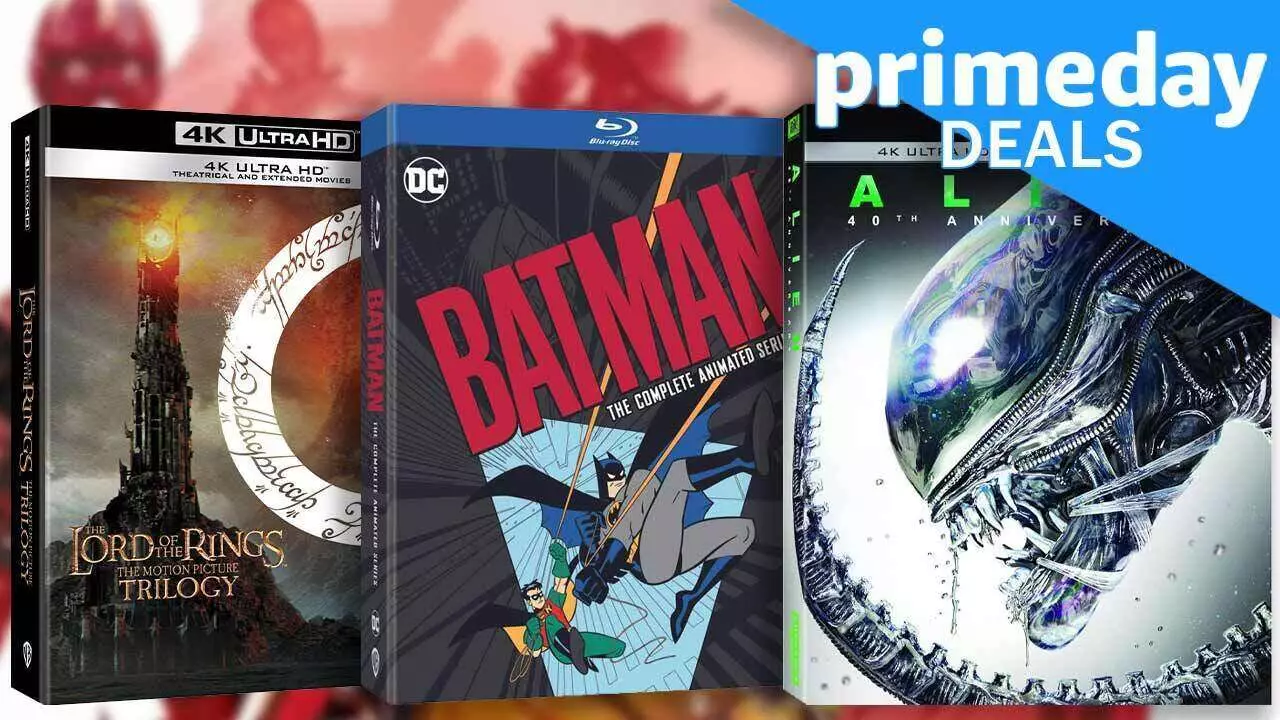Amazon Prime Day 2025 is more than just a shopping event; it’s a celebration of entertainment that offers unprecedented access to a vast universe of movies, TV series, and collectibles. For cinephiles and TV buffs alike, this day provides the opportunity to revamp their home entertainment systems without breaking the bank. The sheer volume of discounts on physical media—ranging from pristine 4K Blu-ray releases to iconic box sets—transforms the shopping experience into an art of strategic acquisition. However, beneath the surface of flashy deals lies an important question: are these offers genuinely beneficial, or are they another marketing ploy? Given Amazon’s history of fluctuating deals, it’s essential to approach Prime Day with a critical mindset, discerning between genuine bargains and temporary gimmicks.
In my view, savvy consumers use Prime Day as a moment to assert ownership over their entertainment journey—investing in titles and collections they genuinely cherish or have long desired. The discounted price tags reflect an opportunity to build a library that transcends streaming platforms, offering high-quality physical media that, unlike digital access, doesn’t depend on subscriptions or internet stability. Still, the chaotic nature of the sales also demands attentive vigilance, ensuring that one doesn’t impulsively purchase titles simply because they are “on sale.”
Quality Over Quantity: Evaluating the True Value of Prime Day Deals
While the temptation to fill your cart with countless titles is powerful, a more critical approach urges consumers to prioritize quality and relevance. The advertised markdowns—such as the Middle-earth 6-Film 4K Collection, discounted from $210 to $89.49, or the James Bond 24-Film Collection for a mere $55—sound impressive. However, it is vital to assess whether you genuinely need these sets or if they’re just garage sale curiosities repackaged into digital art.
Another aspect often overlooked is the longevity and format quality of the items. The latest 4K UHD Blu-ray releases, like Captain America: Brave New World or the newly minted Jurassic Park editions, showcase how even the most recent films can be enjoyed at their highest resolution. But older classics, such as The Shining or Alien, prove that revival of timeless works through affordable re-releases can dramatically enhance your viewing experience. The question I pose to myself—and should to others—is: Will I watch these titles repeatedly? Or are they merely impulse purchases motivated by temporary price drops?
Furthermore, the mentioned Buy Two, Get One Free promotion complicates decision-making. While it is an attractive deal, it may lead to overbuying. A responsible approach involves curating a list of must-have titles, matching them against the sale’s criteria, and resisting the temptation to purchase less-than-essential items. Critical scrutiny of the catalogs—particularly noting if titles are eligible for the B2G1 sale—is essential to avoid buyer’s remorse after the event concludes.
Strategic Shopping in a Market of Abundance
The sheer variety of options available during Prime Day—covering menus from movie box sets to niche anime collections—can be overwhelming. It’s easy to get caught up in the thrill of the hunt, but an informed strategy ensures that the savings translate into meaningful additions to your collection. For instance, a dedicated fan of superhero sagas might prioritize the Batman 4K Film Collection or The Dark Knight Trilogy, knowing they’ll revisit these films for years. Conversely, a classic film enthusiast could focus on acquiring Stanley Kubrick’s three-film 4K collection, appreciating the upgrade in visual and audio quality.
Beyond choosing titles, it’s crucial to analyze physical media specs. Titles on 4K Blu-ray often come with HDR and Dolby Vision enhancements, making them superior to older DVDs or even standard Blu-ray editions. Not all deals are created equal; thus, matching prices to actual quality upgrades is a necessary step. Moreover, some deals include coupons that can further reduce the prices—an aspect often overlooked or missed by casual shoppers.
While Amazon’s hubs and curated lists simplify the process, their curated nature can sometimes pressure consumers into last-minute decisions. Instead, I recommend creating a personalized wishlist, setting reminders, and cross-referencing other review platforms to verify the value of each deal. In doing so, Prime Day becomes less about frantic accumulation and more about thoughtful, strategic enhancement of one’s media library.
Final Thoughts: Building a Legacy of Quality Entertainment
In the end, Prime Day offers a rare chance to claim ownership over your entertainment universe—an investment in memories, shared experiences, and cultural literacy. But it’s important to remain skeptical of deals that seem too good to be true. As an informed consumer, I believe the true power lies in discerning quality from hype, investing in titles that will withstand the test of time, and resisting the urge to buy simply because a deal flashes across the screen.
By approaching Prime Day with confidence and a critical mind, you are not merely acquiring movies or TV shows. You are curating a collection that reflects your passions, values, and tastes—an enduring library that can be enjoyed for decades to come. The key is patience, research, and a willingness to prioritize meaningful titles over fleeting discounts. In this way, Prime Day becomes not just a shopping event, but a transformative act of cultural enrichment and personal empowerment.

